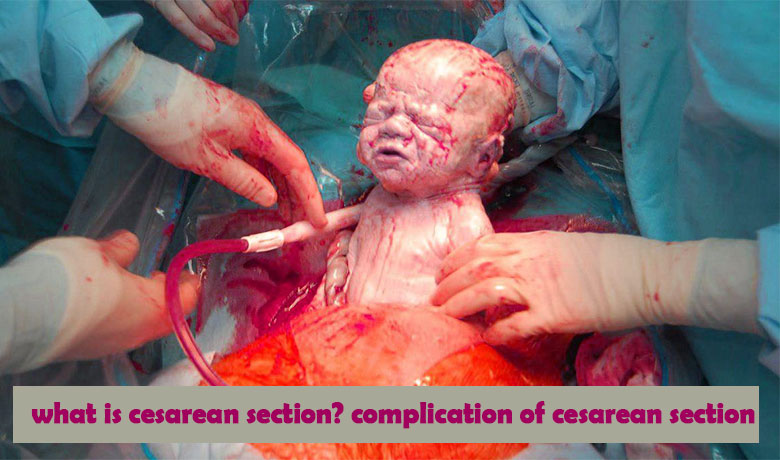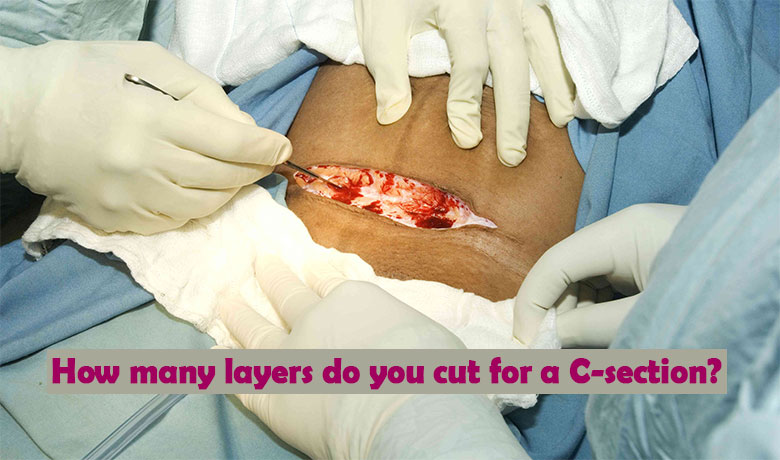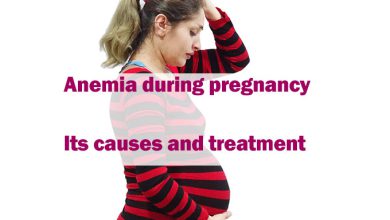what is cesarean section? complication of cesarean section

Cesarean section (C-section) is a surgical procedure that is used to deliver a baby when a vaginal birth is not possible or safe. It involves making an incision through the mother’s abdomen and uterus to deliver the baby. A C-section is a major surgery that carries certain risks and complications. These include infection, bleeding, injury to nearby organs, and problems with future pregnancies.
Complications of cesarean section can occur during the surgery or after delivery. Infection is a common complication that can occur in the uterus, bladder, or incision site. Bleeding can occur during or after the surgery and can be severe in some cases.
Injury to nearby organs such as the bladder or bowel can occur during the surgery, leading to long-term problems. Additionally, C-sections can increase the risk of future complications in subsequent pregnancies, such as placenta previa or uterine rupture.
Cesarean delivery is typically performed when a vaginal birth is not possible or safe. Some common reasons for C-sections include fetal distress, placenta previa, multiple gestations, or a previous C-section.
The procedure involves making an incision through several layers of tissue to deliver the baby. C-sections can be a life-saving procedure for both mother and baby in certain situations, but it is important to consider the risks and benefits associated with it.
The term “cesarean” is believed to have originated from the Latin word “census”, meaning “cut”. The procedure has been practiced for centuries but has become more common in recent years. In some cases, C-section may be planned in advance, while in others it may be performed as an emergency procedure.
Cesarean section is a surgical procedure that can be life-saving for both mother and baby, but it carries certain risks and complications. It is important to consider the risks and benefits associated with C-sections and to discuss with your healthcare provider the possibility of vaginal birth after cesarean (VBAC) for subsequent deliveries.
Related posts: Arthritis in pregnancy
what is a cesarean section?
A cesarean section, commonly known as a C-section, is a surgical procedure in which a baby is delivered through an incision made in the mother’s abdominal wall and uterus. This procedure is typically performed when a vaginal delivery may be risky or not possible for the mother or the baby.
There are several reasons why a cesarean delivery may be recommended. Some of the common indications for a C-section include:
- Fetal distress: When the baby is not getting enough oxygen or there are signs of fetal distress during labor.
- Abnormal fetal position: When the baby is in a breech or transverse position and cannot be delivered safely through the vagina.
- Placenta previa: When the placenta is located in a way that blocks the baby’s passage through the birth canal.
- Maternal health concerns: When the mother has health problems that make a vaginal delivery risky, such as high blood pressure, diabetes, or heart disease.
- Previous C-section: When a woman has had a previous C-section, vaginal delivery may not be recommended due to the risk of uterine rupture.
Cesarean sections are typically performed under regional or general anesthesia and involve making an incision in the abdominal wall and uterus.
The baby is then delivered through the incision, and the uterus and abdominal wall are closed with stitches or staples.
Recovery from a C-section can take longer than recovery from a vaginal delivery, and there may be some risks associated with the procedure, such as infection, bleeding, and injury to the bladder or bowel.
A complication of cesarean section
While cesarean section (C-section) is generally considered a safe procedure, there are some potential complications associated with it. These complications may occur during the surgery itself or in the recovery period following the surgery. Some of the possible complications of a C-section include:
- Infection: Infection can occur at the incision site, in the uterus, or elsewhere in the body. Signs of infection may include fever, pain, redness, or swelling.
- Bleeding: A C-section involves cutting through several layers of tissue, which can result in significant bleeding during or after the surgery. In rare cases, a blood transfusion may be needed.
- Blood clots: Prolonged immobility during and after surgery can increase the risk of blood clots forming in the legs or lungs.
- Injury to organs: During the surgery, nearby organs such as the bladder, bowel, or blood vessels may be accidentally injured.
- Adhesions: Scar tissue may form in the abdominal area after surgery, which can cause pain or discomfort and may also increase the risk of complications during future surgeries.
- Difficulty breastfeeding: Women who have a C-section may experience delayed milk production, which can make breastfeeding difficult.
- Emotional effects: Some women may experience anxiety, depression, or other emotional effects following a C-section.
It’s important to note that while these complications can occur, they are relatively rare and most women who have a C-section have a successful outcome.
Your healthcare provider can provide more information about the risks and benefits of C-sections and help you make an informed decision about whether it is the right choice for you.
Related posts: Signs and Symptoms of Postpartum Depression
What are the 2 types of cesarean section?
There are two types of Cesarean section:
Elective or planned Cesarean section: This type of C-section is scheduled in advance, typically before the onset of labor. It may be recommended for various reasons, such as a previous C-section delivery, certain medical conditions, or personal preference.
Elective C-sections are usually performed after 39 weeks of pregnancy to reduce the risk of respiratory distress syndrome in the newborn.
Emergency or unplanned Cesarean section: This type of C-section is performed when there is an urgent need to deliver the baby, either because of complications during labor or because the baby is in distress.
Emergency C-sections may be necessary if there are concerns about the mother’s or baby’s health, such as a sudden drop in fetal heart rate, placenta previa, or uterine rupture.
Emergency C-sections may be performed under general anesthesia or regional anesthesia, depending on the urgency of the situation and the health of the mother and baby.
Why is it called cesarean section?
The term “cesarean section” is derived from the Latin word “caesus,” which means “cut.” The term “Caesarean” refers to Julius Caesar, who was believed to have been delivered by this method. However, there is no historical evidence to support this claim.
Another theory suggests that the term “cesarean” originated from the Latin word “caesus,” which means “to cut.” This term may have been used to describe the surgical procedure in which the baby is delivered through an incision in the mother’s abdomen and uterus.
Regardless of its origins, the term “cesarean section” has been used for centuries to describe this method of delivery, and it remains the standard medical term for the procedure today.
How many layers do you cut for a C-section?
During a Cesarean section (C-section), several layers of tissue are cut in order to deliver the baby safely. The layers that are typically cut during a C-section include:

- Skin: The surgeon makes an incision through the skin in the lower abdomen.
- Subcutaneous tissue: This layer of fatty tissue is located beneath the skin and is also cut through.
- Fascia: The fascia is a tough, fibrous tissue that lies beneath the subcutaneous tissue. The surgeon will cut through this layer to reach the abdominal muscles.
- Rectus abdominis muscle: The surgeon will make a small incision in the muscle to create an opening for the uterus.
- Peritoneum: The peritoneum is a thin, translucent membrane that covers the organs inside the abdominal cavity. The surgeon will make a small incision in the peritoneum to expose the uterus.
- Uterus: Finally, the surgeon will make an incision in the uterus to deliver the baby.
After the baby is delivered, the surgeon will repair the incisions made in each layer of tissue. The layers of muscle and tissue are then sutured back together to promote healing. The number of layers that are cut during a C-section may vary depending on the individual case and the surgeon’s approach.
Can I give birth naturally after 2 C-sections?
The decision to attempt a vaginal birth after two previous Cesarean deliveries (VBAC – Vaginal Birth After Cesarean) depends on several factors and should be made on a case-by-case basis by the mother and her healthcare provider.
While VBAC is a safe option for many women who have had one previous C-section, the risks increase with each subsequent Cesarean delivery.
According to the American College of Obstetricians and Gynecologists (ACOG), the risk of uterine rupture during a VBAC attempt after two previous C-sections is higher compared to a VBAC attempt after one previous C-section.
The risk of uterine rupture is approximately 1.5% to 3% after two previous C-sections, compared to 0.5% to 0.9% after one previous C-section.
Other factors that may affect the decision to attempt VBAC after two previous C-sections include the reason for the previous C-sections, the type of incision used, and the mother’s overall health and pregnancy history.
Therefore, it is important to have a detailed discussion with your healthcare provider to weigh the potential risks and benefits of VBAC and make an informed decision about the best mode of delivery for you and your baby.
How many C-sections can a woman have?
The number of Cesarean sections (C-sections) that a woman can have depends on several factors, including her overall health, the type of incision used in previous surgeries, and the reason for the C-sections.
According to the American College of Obstetricians and Gynecologists (ACOG), most women who have had one or two C-sections are candidates for a vaginal birth after a cesarean (VBAC) in subsequent pregnancies. However, the risks of complications increase with each additional C-section.
The risks associated with multiple C-sections may include:
Increased risk of surgical complications, such as infection, bleeding, and injury to nearby organs.
Increased risk of placenta previa or placenta accrete, which can lead to heavy bleeding during delivery.
Increased risk of uterine rupture during labor.
Increased risk of future pregnancy complications, such as abnormal placentation or preterm birth.
Therefore, ACOG recommends that women who have had two or more C-sections discuss the risks and benefits of a subsequent pregnancy with their healthcare provider and make an individualized decision regarding the mode of delivery that is safest for them and their baby. In some cases, a planned C-section may be the best option for the health of the mother and baby.
How long is recovery after a C-section?
The recovery period after a Cesarean section (C-section) can vary depending on several factors, including the mother’s overall health, the type of incision used, and whether or not there were any complications during the surgery.
In general, it takes about six weeks for the incision to heal and for the mother to feel fully recovered after a C-section. During this time, the mother will need to take extra care to avoid heavy lifting, strenuous activities, and other activities that may strain the incision site.
Here is a general timeline for the recovery after a C-section:
- The first few days after surgery: The mother will be monitored closely in the hospital for any signs of infection, bleeding, or other complications. Pain medication will be provided to help manage any discomfort.
- The first week after surgery: The mother may feel sore and have difficulty getting up and walking around. She may need to use a walker or crutches for support. She should avoid stairs, driving, and other activities that require a lot of physical exertion.
- The second week after surgery: The mother may feel more comfortable and be able to move around more easily. She may start to resume some light activities, but should still avoid heavy lifting and strenuous exercise.
- Third and fourth week after surgery: The mother may start to feel more like herself and be able to resume more activities. However, she should still take care to avoid heavy lifting and other activities that may strain the incision site.
- A sixth week after surgery: The mother will have a follow-up appointment with her healthcare provider to check the incision site and ensure that she is healing properly. By this time, she may be able to resume most of her usual activities.
It’s important for the mother to follow her healthcare provider’s instructions for post-operative care, including wound care, pain management, and physical activity, in order to ensure a safe and speedy recovery.
How long does a cesarean take?
conclusion
In conclusion, cesarean section, also known as cesarean delivery, is a surgical procedure that is used to deliver a baby through an incision made in the mother’s abdomen and uterus. It is typically performed when vaginal delivery is not possible or safe for the mother or the baby.
While it is a common procedure, it does carry risks and potential complications, such as infection, bleeding, and injury to nearby organs.
It is important for expectant mothers to discuss their options and potential risks with their healthcare provider to make an informed decision about the best method of delivery for themselves and their baby.
